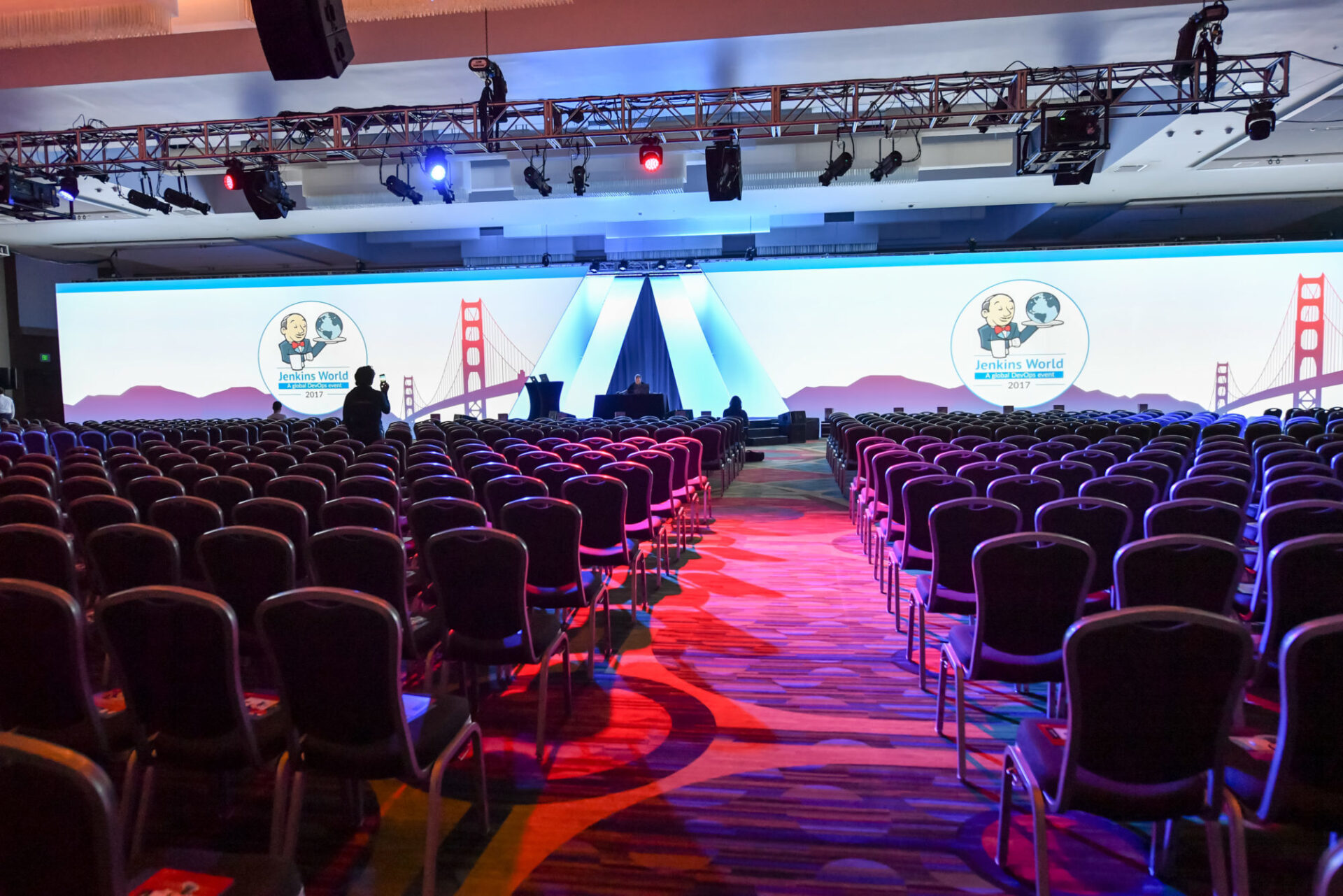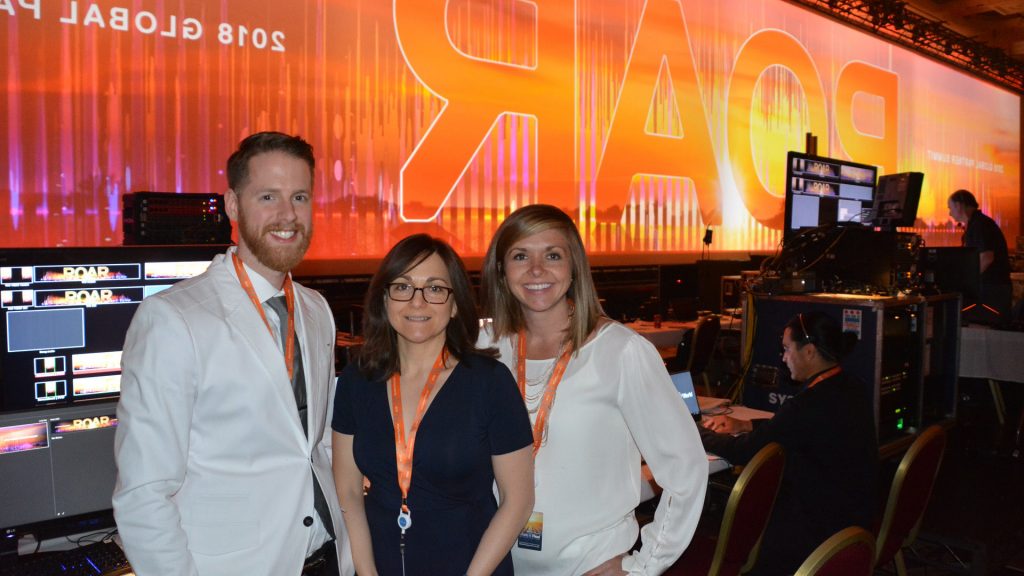
Event presentations can feel overwhelming as you juggle the story, the speaker’s strengths or weaknesses, the audience perspective, the screen, the lighting, the experience, the timing, and the list goes on. Here are a few things to keep in mind as you work on your event presentation.
How big is the venue? Is it a super size screen? How many people will be attending? Will there be anything blocking views from certain seating areas? Will this need to have slides for webcasting?
Don’t allow these questions to be an afterthought because it takes time and a little pre-planning to make things work for vastly different screen sizes.
While many events begin with an opening act or video, the energy level can drop quickly if the audience is then subjected to “death by PowerPoint” slides. While having some high energy moments is essential, you also want to leave room to build. The audience should experience both highs and lows, high energy as well as thoughtful moments and dramatic pauses.
Get your story down first. If it’s going to be in constant flux up to the event, keep in mind that you don’t need a content-driven slide behind you at all times. An excellent presentation takes into consideration visual fatigue. Consider a more fluid approach that focuses on the relationship of the audience to the speaker. Take a break and speak in front of a simple backdrop, then shift to imagery or slides when it helps your message.
Don’t just think about creating slides. Think about how lighting and audio might be used to engage your audience further. Changes in the atmosphere, lighting, and sounds are design experiences to perk up your audience.
While you may have a great speaker on stage, in longer presentations, introducing other experts or customers on stage or through video can offer the audience a deeper more well-rounded understanding. By incorporating short videos between talking points, the presenter can get a short break, and you shift the audience experience for a bit to keep things feeling fresh.

Shifting the format from a single speaker to two speakers having a conversation or even a panel discussion can also help add structure and excitement to longer presentations.
You might know what you want to tell your audience, but how do you want to make them feel? Tone, visuals, audio, and pace will create a cohesive mood across all your presentations.
The audience is looking for human connection. Overusing slides can diminish the speaker’s ability to have an emotional connection with the audience. And while the presenter may be reading from a script, this doesn’t mean you need a visual for every sentence.
When you do need slides try to rely on imagery, rather than text, to tell your story.
A broader visual allows more room for emotional engagement. Presentation visuals should enhance what you’re saying, not do the talking for you. A good rule of thumb is to focus on one point per slide.
While a lot of attention is spent on the presentation for a keynote speaker, many events have smaller breakout sessions that dive into more detail.
At the minimum a consistent presentation template is essential, but the majority of these presentations are heavier content layouts. Consider having a slide library of common layouts created for the event’s brand to keep a consistent tone.
If you are using an agency, get them involved early. An agency can help polish your story, and if there is time up front, they may suggest things you had not considered.
Beyond the pure entertainment side of an event, creating smaller entertaining moments can be just as important.
While you may have some serious points to make, don’t be afraid to have fun! A good laugh now and again can create an excellent connection between the audience and presenter. And if at any point things don’t go as planned, roll with it and laugh it off. These moments are very human and make the speaker that much more approachable.



